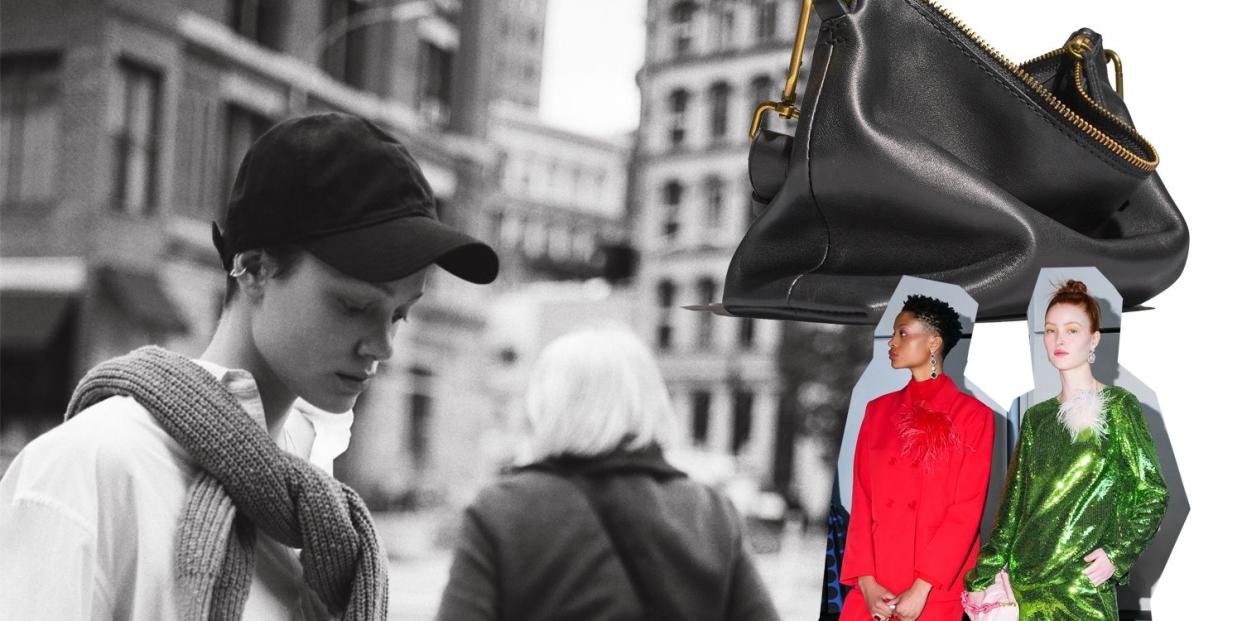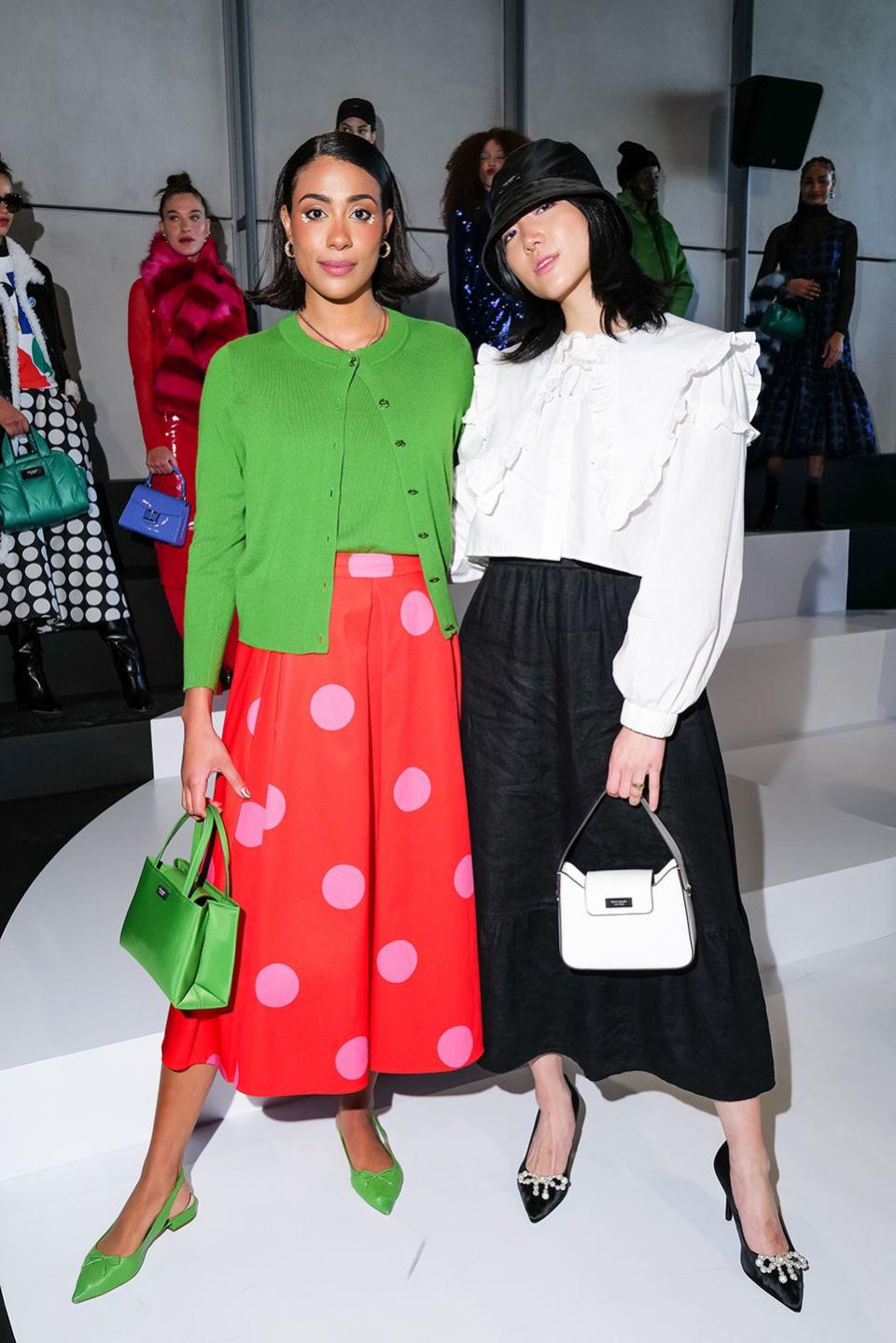Brands Are Going Back to Basics

"Hearst Magazines and Yahoo may earn commission or revenue on some items through these links."

I’m in need of a sartorial reset. Apparently, so is the rest of the fashion world. Yes, the runways are dotted with spectacles and performances worthy of endless social media posts. And yes, maximalism may always be in the trend rotation. But then there’s the other end of the spectrum, where wardrobe basics and minimalism reign supreme. Even Gucci—the brand known for its more-is-more designs—offered what felt like a breath of fresh air when models walked down the runway in brown blazers, oxford shirts, and loose-fitting jeans for fall/winter 2023. It became clear that the house is in its post-Alessandro Michele era. Perhaps the rest of us are, too.
There’s a scene from the 2004 film Uptown Girls where a young Dakota Fanning quotes dancer Mikhail Baryshnikov: “Fundamentals are the building blocks of fun.” It may not have been the most pivotal moment of the movie, but it does ring true for many things. And, rather than wiping the slate clean or attempting to reinvent the wheel, the fashion industry appears to be revisiting its own fundamentals to pave the way toward something new.
“Right now, we feel that there is a focus on the foundational wardrobe and pieces that are essential but also free, emotional, and covetable,” Joyce Lee, Madewell’s senior vice president of design, shared with me in an email. The brand—known for its denim and other uncomplicated pieces like its bestselling Whisper cotton T-shirts—recently launched a collection, dubbed “The New Classics,” of wardrobe staples including a trench coat, a crisp button-down shirt, a tailored suit, and, of course, jeans. According to Lee, the collection is Madewell’s interpretation of the foundational wardrobe, designed to be the starting point for your closet as you develop your personal style. Lucky for us, this falls right in line with the nouveau normcore trend for spring and the best fall 2023 fashion trends from the runways.
It’s not uncommon to envision Madewell with a bohemian flair. Breezy printed summer dresses, relaxed leather bags, and whimsical gold-plated jewelry are all part of the brand’s offerings. However, with ties to its sister brand J.Crew, Madewell’s origins also lie in the world of prep. One look at The New Classics campaign and blog posts from the 2010s—which feature lookbook images of neutral knits and skinny jeans with chambray shirts—it looks like Madewell has started to make its way back. Or, at the very least, back towards its minimalist beginnings.

Other labels are revisiting their heritages, too. At Kate Spade New York’s fall 2023 presentation during New York Fashion Week, I spoke with designers Tom Mora and Jennifer Lyu, the head of ready-to-wear and lifestyle and the head of leather goods and accessories, respectively, about the choice to bring back the Sam bag, which originally launched in 1993 as one of the label’s inaugural designs. “We like to say, ‘In order to move forward, you look back a little bit, and so the Sam bag was one of our key elements,” Mora offered. He also mentioned that 2023 marks the brand’s 30th anniversary, and the boxy leather tote is a key part of the collection. Additionally, the design duo also launched Kate Spade Green with Pantone, a vibrant shade based on the brand’s signature hue, with slight modern tweaks.
While referencing Kate Spade’s legacy, Mora and Lyu also see their latest showing as a fresh start. “This collection was a metaphor for the idea of fall being a blank canvas, the beginning of something new; endless possibilities,” Mora explained. As for where the two see the brand going in the coming years, they both find that Kate Spade New York currently resonates as a brand for all ages. “We’re really seeing this as the jumping off point; being the brand that not only celebrates uniqueness and individuality....It feels like a pivotal moment for us.”
It’s no secret that fashion often repeats itself—and there’s no doubt the industry likes to reimagine old things as new. But what exactly happens when a brand brings its audience a blast from the past? Well, just look at Banana Republic—which was once known as Banana Republic Travel & Safari Clothing Company.
Whether or not you’ve been paying attention since the workwear brand rebranded in March 2021, odds are you’ve noticed a change in the pieces it’s been putting out—one that lends itself to its start in the world of travel, specifically exploration and adventure. “We’re leveraging our history as a travel brand to create a distinctive BR look that is rich in texture and style with a focus on quality and innovation,” said Nicole Wiesmann, Banana Republic’s vice president of design. “Our roots in utility with a tailored refinement create this ‘BR look,’ which pairs premium skins, fabrics, and fibers for a sense of rugged luxury.”
Wiesmann shares that the design process starts with Banana Republic archival pieces and catalogs, as well as sourced vintage pieces. “For our core collection, we may take an idea and modernize it through cut and make or fabric, while for our heritage collection, it is truly a replica of archival pieces,” she said. “We keep the integrity of those pieces by not altering fit and by trying to find fabrics that are super close to the original.” The result? A brand with pieces that have shoppers (myself included) alerting others—on TikTok and elsewhere—to discuss how refreshingly elevated everything feels.
Another notable brand to tap into its archive is J.Crew. Earlier this month, womenswear director Olympia Gayot shared a post on Instagram announcing the return of its beloved Rollneck Sweater, which first launched in the late ’80s, quoting old catalog copy with one additional phrase: “And she’s back.” Through her posts and other statements, Gayot makes it very clear that flipping through the brand’s catalogs from years past and embracing J.Crew’s heritage has been a major influence on her designs.
While there are always new collections each season, fashion isn’t necessarily about building from scratch. Sometimes, it’s about making what was once considered old new again. When I spoke with the Kate Spade team, Lyu framed it as a new challenge. “When we remake things, whether it’s a color or a bag, there are some elements that you really want to maintain and spotlight what you want to push and pull that lever on,” she said. Yes, these designers are undoubtedly putting their finishing touches on every piece—including the ones that have been recreated for today—but they’re also recognizing the greats before them.
No—you won’t be sporting exact copies of looks from the ’80s, ’90s, or even early 2000s when you wear these relaunched or reimagined staples today. Instead, you’ll be going back to the roots. So bust out that Kate Spade bag from middle school, because what’s old is almost always new again.
You Might Also Like


